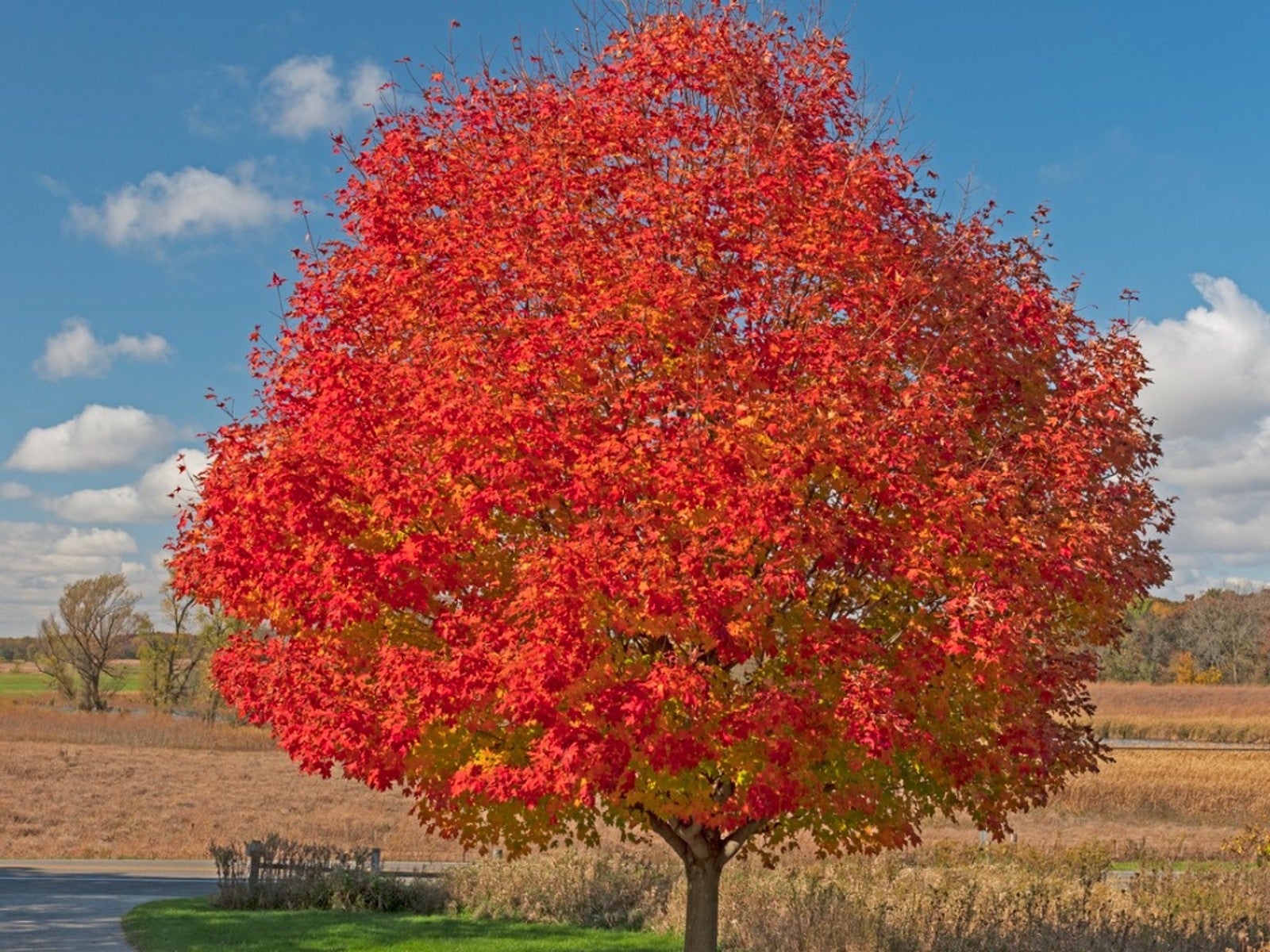October Glory Red Maples: How To Grow October Glory Trees


For an ornamental, fast-growing tree with great fall color, it’s hard to beat the ‘October Glory’ cultivar of red maple. Although it does best in temperate climates, it can grow in the warm south with extra water and will provide spring flowers, spectacular fall color, and quick growth.
October Glory Tree Info
There are several cultivars of red maple, Acer rubrum, and ‘October Glory’ is a popular one for its spectacular display of fall color. October Glory red maples are also popular because they grow vigorously and easily. If you need a tree that will grow fairly quickly and fill out some space with great color in the fall, this is a good choice.
October Glory grows to a height of 40 to 50 feet (12-15 m.). It grows best in zones 5 through 9. In areas to the south of its range, the trees grow shorter and need regular irrigation or a wet soil. In the spring, this red maple will produce pretty red flowers and will attract birds and squirrels with its seeds in the summer. In the fall, expect to see showy shades of yellow, orange, and red.
How to Grow October Glory
October Glory red maple care is similar to care for any maple. The first consideration is to find the best spot for growing an October Glory tree. These trees prefer part shade but will grow in full sun.
They tolerate a range of soil types, and they do best with adequate water. A location that dries out quickly is not best for this maple tree. They will not tolerate salt or drought very well. The roots may disrupt driveways and sidewalks as they grow.
When planting a new October Glory, water it well and regularly until it has established its roots, typically for one season. After that care is mostly hands off, but watch out for diseases and pests, like aphids, scales, and borers.
The diseases this maple may be susceptible to include scorch, tar spot, girdling roots, and leaf spot. Girdling roots can kill your maple and are difficult to treat, so prevent them by removing any circling roots on your young October Glory.
Gardening tips, videos, info and more delivered right to your inbox!
Sign up for the Gardening Know How newsletter today and receive a free copy of our e-book "How to Grow Delicious Tomatoes".

Mary Ellen Ellis has been gardening for over 20 years. With degrees in Chemistry and Biology, Mary Ellen's specialties are flowers, native plants, and herbs.
-
 Try The Trend – Turn Any Bed Into A Keyhole Garden With This Clever In-Ground Composter
Try The Trend – Turn Any Bed Into A Keyhole Garden With This Clever In-Ground ComposterKeyhole gardening is an efficient and sustainable practice that saves space. Get started on this DIY project quickly and easily with an in-ground composter.
By Bonnie L. Grant
-
 4 Superfast Composting Methods: Turn Waste Into Garden Gold In 30 Days Or Less
4 Superfast Composting Methods: Turn Waste Into Garden Gold In 30 Days Or LessTry the fastest composting methods to turbocharge your pile and transform kitchen scraps and garden waste into finished compost in just a few weeks.
By Mary Ellen Ellis